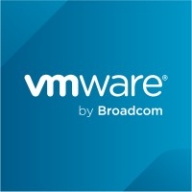

VMWare Tanzu CloudHealth and AWS Cost Explorer compete in the cloud management and cost optimization sector. User data suggests AWS Cost Explorer holds an edge due to its robust features.
Features: VMWare Tanzu CloudHealth provides budget tracking, cost visualization, and anomaly detection. AWS Cost Explorer offers advanced forecasting capabilities, detailed granular data, and versatile reporting tools. Its predictive analytics enhance strategic financial planning.
Ease of Deployment and Customer Service: VMWare Tanzu CloudHealth has a streamlined, intuitive setup process with responsive customer assistance. AWS Cost Explorer ensures straightforward deployment, extensive online resources, and community support. Detailed documentation aids in easier user adoption.
Pricing and ROI: VMWare Tanzu CloudHealth presents a competitive setup cost with significant returns from effective cost optimization. AWS Cost Explorer, often bundled with AWS services, reduces initial costs and drives substantial long-term savings. CloudHealth is initially cost-effective, but Cost Explorer's capabilities offer potentially higher ROI over time.
| Product | Market Share (%) |
|---|---|
| VMWare Tanzu CloudHealth | 5.2% |
| AWS Cost Explorer | 2.6% |
| Other | 92.2% |

| Company Size | Count |
|---|---|
| Small Business | 4 |
| Midsize Enterprise | 2 |
| Large Enterprise | 4 |
AWS Cost Explorer provides a detailed view of your cloud expenses, helping you manage and optimize costs. Its analytics tools deliver insights vital for financial planning and operational efficiency.
AWS Cost Explorer offers powerful cost management features crucial for modern businesses leveraging cloud resources. Its advanced analytics tools facilitate the identification of spending patterns, contributing significantly to efficient financial management. The intuitive interface ensures easy navigation through detailed reports and forecasts, aiding in comprehensive cost analysis. API capabilities allow seamless integration with internal systems, enhancing overall financial oversight. Subscriptions to AWS Cost Explorer provide robust support for budget planning and cost savings by enabling cost allocation down to the resource level, assisting organizations in maintaining their financial goals while agilely utilizing the cloud.
What are the important features of AWS Cost Explorer?In industries such as finance and healthcare, AWS Cost Explorer is instrumental in adhering to budgetary constraints while scaling operations. Financial institutions leverage its predictive analytics for better cost estimates, while healthcare providers use its budget alerts to ensure financial efficiency. By integrating AWS Cost Explorer, these industries achieve a balance between financial prudence and technological advancement, maintaining profitability without sacrificing service quality.
VMware Tanzu CloudHealth, formerly known as VMware Aria Cost Powered by CloudHealth, is a specialized cloud management platform tailored for Multi-Cloud Cost Optimization. It offers comprehensive visibility into cloud spending across various providers, enabling users to identify areas for optimization and make informed resource allocation decisions. With features like reserved instance management, resource rightsizing, and automated cost governance policies, it facilitates financial management for optimal cost efficiency. Beyond cost optimization, Tanzu CloudHealth enhances cloud operations through workload optimization and governance automation, catering to multi-cloud environments encompassing public, private, and hybrid clouds. Its primary focus remains on enabling organizations to effectively manage and reduce cloud expenditures while supporting operations across diverse cloud platforms.
We monitor all Cloud Cost Management reviews to prevent fraudulent reviews and keep review quality high. We do not post reviews by company employees or direct competitors. We validate each review for authenticity via cross-reference with LinkedIn, and personal follow-up with the reviewer when necessary.